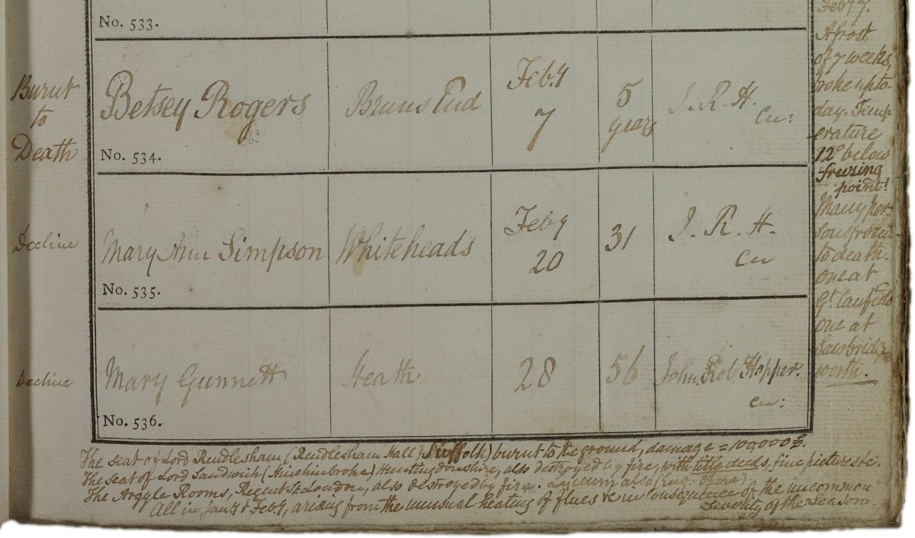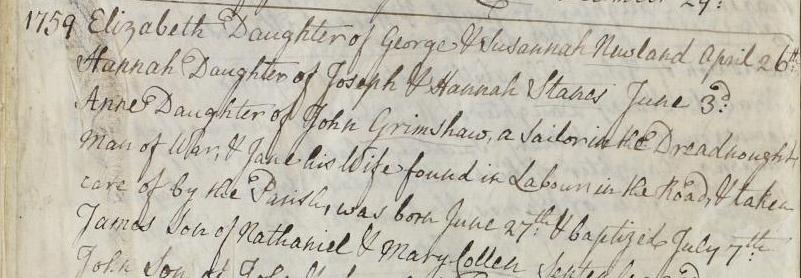After a lot of work we are finally able to announce that the Essex Record Office, working alongside Ancestry.com have launched a new searchable index of the Essex parish registers. Searching for your Essex ancestors is now easier than ever!
In celebration of our new partnership with Ancestry.com, Edward Harris, Customer Service Team Lead, takes a look at some of the stories found in the pages of our parish registers. Read on for more information about what we have been working on with Ancestry.com.

The Parish Registers of England, containing as they do the records of baptisms, marriages and burials made by the Church of England are frequently the start and the backbone of a genealogist’s journey into family history. Prior to 1837 and the start of civil registration, they are essential for family history. Unfortunately they are all too often the end of that journey. When the next link cannot be made or one elusive great, great, great, great grandparent fails to materialise, it is usually normally the pages of a parish register that we are gazing at.
Despite the frustrations so many of us hardy researchers are well aware of, it cannot have escaped our notice that within this great national collection there are a countless stories. These stories provide snippets of the joys and sorrows of everyone, whether normal or extraordinary. They can be better than any soap opera but always tantalising because of what they often don’t tell us and the questions they can’t answer for us. We decided to take a retrospective look at some of the stories we have unearthed over the years at the Essex Record Office where a helpful curate or vicar has decided to provide us with a few extra snippits of information.
The parish burial register for St Mary the Virgin in Hatfield Broad Oak includes in its pages the sad and untimely death of 5 year old Betsy Rogers burnt to death, and two extraordinary marginal notes on that page give a clue as to how:

Feb.y 7. A frost of 7 weeks broke up today. Temperature 12° below freezing point! Many persons frozen to death. One at Gt Canfield, one at Sawbridgeworth.
The seat of Lord Rendlesham (Rendlesham Hall, Suffolk) burnt to the ground, damage = 100,000£; The seat of Lord Sandwich (Hinchinbroke, Huntingdonshire) also destroyed by fire with title deeds, fine pictures, etc.; The Argyle Rooms, Regent St, London also destroyed by fire. Lyceam also…All in Jan.y in Feb.y arising from the unusual heating of flues etc. in consequence of the uncommon severity of the season.
The register for Little Clacton contains a very sad and somewhat mysterious story dating from 1592, when a bride, Prudence Lambert, hanged herself the morning after her wedding to Clement Fenn.

Clement Fenn singleman, and Prudence the late wife of Nycholas Lambert, wch dwelt in Little Clacton Lodge; were maryed uppon Teusdaye [six], the xvth day of August; but the (most accursed creature), did the verye next morning, desperatelie hang her selfe, to the intolerable grieffe of her new maryed husband, and the dreadfull horror and astonishment of all the countrye.
Prudence’s burial is recorded two days later in the same register.

Prudence Fen, now the wife of Clem[e]nt Fen, and late the wife of the above named Nicholas Lambert; was buried out of the compas of Christian burial; in ye furthest syde of the churchyard northward; uppon the xviith daye of August; for that shee most accursedlie hanged her selfe.
A slightly happier story is found in the parish register from Ugley (one of Essex’s more esoteric place names) in 1759 which records the baptism of:
Anne daughter of John Grimshaw, a Sailor in the Dreadnought Man of War, & Jane his wife found in Labour in the Road, & taken care of by the Parish, was born June 27th & baptized July 7th

From these stories of life and death, to the sort of story that leaves family historians pulling out their hair in frustration.
In 1862 the baptism register for St Mary Magdalene in Harlow recorded the reason for its early closure. The registers had been removed from the church by the curate Revd William Raymond Scott who took them to Hawaii (then known as the Sandwich Islands). The curate had travelled to accompany the new Bishop of Honolulu to the island, but also to chaperone 70 young women destined for a life in Australia.
The registers would survive a mutiny, make a brief stop at the Falkland islands and Australia before reaching Hawaii. Fortunately the registers did return to the church 2 years after leaving these shores and so are still available to researchers.

Fortunately, provided the register in question isn’t on a voyage around the world, searching the Essex parish registers is now easier than ever!
Since 2011, the Record Office’s service Essex Archives Online (www.essexarchivesonline.co.uk) has been making Church of England parish registers – and some other documents – available as digital images. Off-site, this works as a subscription scheme, offering various lengths of subscription between 1 day and 1 year. Some documents on the system, such as wills, come with their own name indexes, but the parish registers do not. Subscribers looking for a particular baptism, marriage or burial have often had to work through a whole parish year by year.
The ERO has now teamed up with Ancestry, the world’s largest online commercial family history website, to offer a new way to access the data. Ancestry have created a name index to the parish register images, and Ancestry users can click straight through from the index to Essex Archives Online in order to buy a copy of the indexed image. Images are emailed out automatically on payment; each one costs £2.99 including VAT.
Essex Archives Online expands as new registers are deposited, but currently it holds about 600,000 images of Anglican parish registers deposited either in the ERO itself or in Waltham Forest Archives. The registers cover the whole of the present county of Essex, including Southend and Thurrock – and also including parts of north-east London that used to be in Essex. Depending on the parish and the event in question, they cover the whole period from 1538 almost up to the present day. Ancestry’s new index covers all the baptisms up to 100 years ago; all the marriages up to 84 years ago; and all deposited burial registers, whatever their date.
For those with large family trees to discover the subscription option is still available, but for anyone who needs an image now and again the new system is easier, quicker and cheaper!





